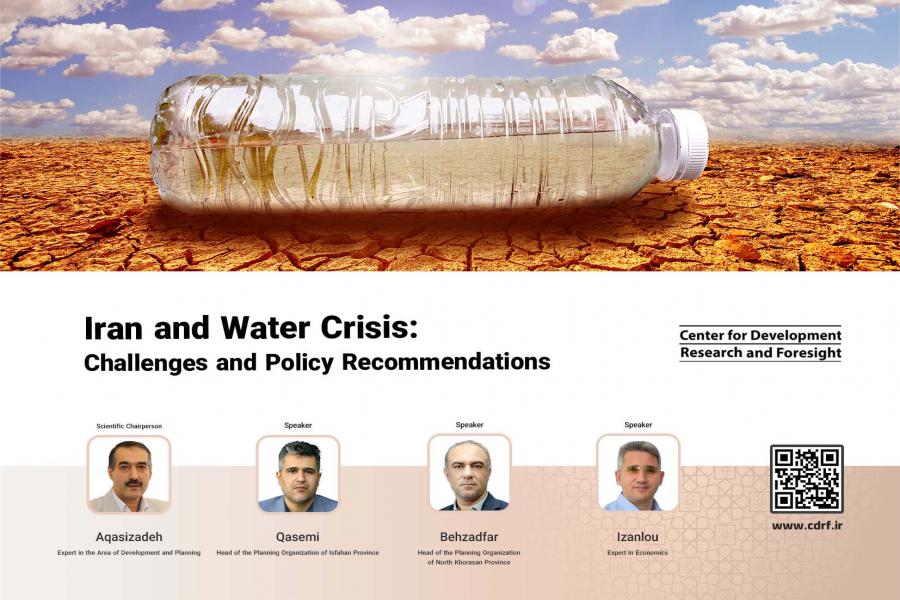
-
بررسی آییننامهها و دستورالعملهای برنامه هفتم پیشرفت
-
بررسی عوامل موثر بر افزایش تصادفات و تلفات جادهای و سوانح رانندگی و دادهکاوی تلفات انسانی
-
سازماندهی و بازآرایی فضایی آموزش عالی کشور
-
به روز رسانی سند ملی آمایش سرزمین
-
انجام مطالعات مناطق آزاد به عنوان نواحی پیشران اقتصادی کشور
-
اصلاح ساختار بودجه و پیاده سازی نظام یکپارچه مدیریت اطلاعات مالی دولت (IFMIS)

Iran's water crisis, long simmering beneath the surface, has reached a boiling point, according to experts who gathered at a conference titled “Iran's Water Crisis: A Looming Threat, Experts Warn” at the Center for Development Research and Foresight. The conference brought together leading figures in planning, development, economics, and water resource management to discuss the challenges and potential solutions to this pressing issue.
The opening remarks by Fathollah Aghasi Zadeh, a researcher in planning and development, painted a stark picture of the crisis. He described it as a complex issue with eight key characteristics, including a turning point that necessitates new decision-making. He emphasized the interconnectedness of factors involved in the crisis, highlighting the rising tensions between them.
Ghasem Izanloo, an expert in economics and the head of the of the project of "Iran and the Water Crisis," echoed Aqasizadeh's concerns. He pointed to Iran's ranking as fourth in the world for water tension, a grim indicator of the country's water scarcity. He attributed this tension to several factors, including the ever-increasing demand for water in various sectors, unsustainable agricultural practices, and limited freshwater resources. Izanlou further criticized the lack of a published books related to water since the mid-1990s, arguing that this hinders informed decision-making and masks the true extent of the crisis. He also lamented the lack of collective action and clear strategies to address water management as a critical public good.
The conference also featured presentations from Mohammad Reza Qasemi, head of the Planning and Management Organization of Isfahan Province, and Morteza Behzadfar, head of the Planning and Management Organization of North Khorasan Province. Both speakers painted a dire picture of the water crisis in their respective regions, highlighting the challenges of water scarcity, land subsidence, and environmental degradation.
Qasemi specifically focused on the plight of the Zayandeh Rood basin, a crucial source of water for Isfahan province. He described the basin as drying up, with devastating consequences for the environment, agriculture, and industry. He called for stricter water management policies and a reduction in water consumption to revive the basin.
Behzadfar, on the other hand, emphasized the potential of traditional water management methods employed by Iranian farmers for centuries. He advocated for reviving these indigenous practices, such as rooftop water harvesting and Qanat systems, to conserve water and manage resources more sustainably.
This conference served as a stark reminder of the looming water crisis in Iran. The experts' presentations highlighted the complex challenges, from data scarcity and policy inconsistencies to economic constraints and public awareness. However, they also offered a glimmer of hope, emphasizing the potential solutions through improved data collection, policy reforms, economic incentives, and public education.
As Iran grapples with this water crisis, the need for immediate action and collective effort is undeniable. The solutions presented at the conference offer a roadmap, but the journey towards a more sustainable water future will require unwavering commitment from policymakers, communities, and individuals alike.



